




 |
 |
 |
 |
 |
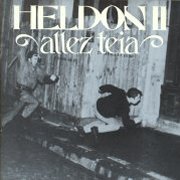 |
II: Allez Teia (1975, 41.10) ***½/TTTIn the Wake of King FrippAphanasis Omar Diop Blondin Moebius Fluence Continuum Mobile Disjonction Inclusive St-Mikael Samstag am Abends Michel Ettori |
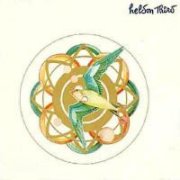 |
III: "It's Always Rock'n'Roll" (1975, 83.08) ***/TICS MachiniqueCotes de Cachalot à la Psylocybine Méchamment Rock Cocaine Blues Aurore Virgin Swedish Blues Ocean Boogi Zind Destruction Doctor Bloodmoney |
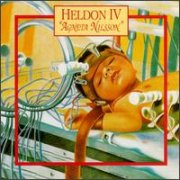 |
IV: Agneta Nilsson (1976, 50.22) ***½/½Perspective I (Où Comment Procéde le Nihilisme Actif)Perspective II Perspective III (Baader-Meinhof Blues) Intermède: Bassong Perspective IV Perspective IV Virgin Swedish Blues Psylocybine |
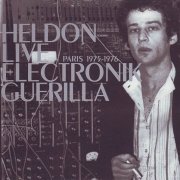 |
Live Electronik Guerilla: Paris 1975-1976 (2006, 51.44) ***½/T1984 Apres Cosmic C'EtaitDistribution Deterritorialisation Heldon is Back Lady From the North Klossowski's Circlus Vitiosus Death of Omar Diop Blondin Track of Cocaine |
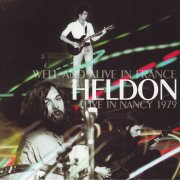 |
Well & Alive in France: Live in Nancy 1979 (2006, 83.32) ****/T½Virgin Marie OverdriveHeldon UFO War Machine Schizosphere/Mekanosphere/Rhiszoshpere Red Line Target The Large Interface Session Mellotronic Dune Dance |
Current availability:
Mellotrons used:
Now, far be it from me to say that Heldon mainman Richard Pinhas was a Crimson fanatic, but the title of his second album's opening track rather gives the game away. Assuming it wasn't some sort of Gallic joke, that is; I'm afraid it's rather hard to tell. Saying that, Heldon were by no means a straight Crimso copy; Pinhas had his own guitar technique that incorporated some of Fripp's stylings, rather than completely ripping him off. Given that both Pinhas and his collaborator Georges Grunblatt play Mellotron on Heldon II: Allez Teia, there is surprisingly little of it on the album; three tracks out of seven, to be precise. Think 'the quieter end of Crimso's improv scale' and you might be getting close to how Heldon used their Mellotron; strings, fairly dark, but drifting rather than intense. ...King Fripp is the best example on the album, but all three are worth a listen, as indeed is the whole album. I wouldn't call Allez Teia exactly startling, but it's a good listen with some unexpected twists.
Heldon III: "It's Always Rock'n'Roll" is an assault course of an album in many ways; a double LP of almost rhythmless electronics and general weirdness that makes its predecessor sound fairly normal. It opens with a purely electronic piece, ICS Machinique, following on with more synths and Pinhas' still quite extraordinarily Fripp-like guitar on Cotes De Cachalot À La Psylocybine, then proceeds in similar fashion for the next hour plus. Pinhas' Mellotron finally makes an appearance with some understated cellos on Virgin Swedish Blues (guess what: it isn't), while Grunblatt contributes the album's only serious Mellotron with a ghostly string part that ebbs and flows throughout Ocean Boogi (guess what: it isn't either). It could easily have fitted into several other tracks without disturbing the album's equilibrium, but the musicians concerned presumably felt otherwise. Pity.
Heldon IV: Agneta Nilsson contains four tracks of the by-now familiar electronic grunting, to greater or lesser effect, until the side-long Perspective IV, when Heldon suddenly turn into a full band. Bassist Alain Bellaiche and drummer Coco Roussel (later of the mighty Happy the Man, fact fans) jam away on the twenty-odd minute track, alongside Patrick Gauthier on MiniMoog and Pinhas throwing some hitherto-unseen blues-rock shapes on Part 2, also titled Virgin Swedish Blues (guess what: it actually is this time). The track ends with a sudden tape cut; who knows how much longer they actually played? As far as the album's Mellotronic input goes, it seems it needed both Pinhas and a guesting Philibert Rossi to play the background string part on Perspective I, unless Pinhas contributed more of his almost-inaudible cellos; there certainly isn't any more obvious Mellotron to be heard on the record. Apparently, the original US version messed with the tracklisting, shortening Perspective IV and adding two tracks from Heldon III. Why?
Live Electronik Guerilla: Paris 1975-1976 and Well & Alive in France: Live in Nancy 1979, both released by the Japanese Captain Trip label in 2006, are probably 'semi-official' at best, both only of reasonable bootleg quality. Live Electronik Guerilla kicks off with two tracks from '76, for some reason, before five from the previous year, all sounding heavily improvised, Pinhas' collaborators accompanying (if that's the right word) him on various synths, all set to 'bone-crushing'. Only a smattering of Mellotron from Pinhas, with filthy strings on Lady From The North, swilling around in audio murk. The two-disc Well & Alive in France is a rollercoaster ride of epic proportions, typified by the insanely intense, near-fourteen-minute Red Line Target, just one of several similar sledgehammer blows in musical form. Just one Mellotron track, from Pinhas and bassist Pierrot Roussel, with growling cellos, distant, piping flutes and skronky strings from twin M400s on, unsurprisingly, Mellotronic Dune Dance. None more fucking Crimson, says I.
So; several albums of sometimes startling electronic experimentation (and I haven't even mentioned their bonkers debut, the Mellotronless Électronique Guérilla). Allez Teia is probably the only one actually worth buying for its Mellotron use, though, despite one decent track on "It's Always Rock'n'Roll". Incidentally, 2018's vinyl-only Live in Metz '77, is, according to a learned commenter on Discogs, no more than a partial vinyl reissue of Well & Alive in France, despite shifting the alleged recording date by two years, all of its four tracks being retitled, of which two are edits. Why? To make money, I expect. Avoid.
 |
Chronolyse (1976, 52.56) ****/TTVariations I-VII Sur le Theme de Bene GesseritDuncan Idaho Paul Atreides |
Current availability:
Mellotron used:
One from Scott Hamrick. Note the heavy Dune references, incidentally.
Richard Pinhas has made a long and illustrious career out of combining uncompromising rock and cutting-edge electronic music. He is most known as the founder of the pioneering French techno-prog group Heldon (which had close ties to Magma and Lard Free), but he has several fine solo albums to his name as well. Chronolyse is the second of these solo albums and has much to offer to the prog/electronic aficionado while offering the bonus of Mellotron usage.
Side one is comprised of a series of slightly dry, clinical sounding studies in early sequencing techniques where different repetitive rhythms are pitted against each other in various configurations. The first seven short tracks are all variations on similar themes using nothing but Moog synthesizers. It's good stuff if you like the idea of polyrhythmic synth bleeps and wooshes, but probably a little tedious for those who don't.
Side two is quite different, however and only here does the Mellotron make its appearance. The entire side is occupied by a single, incredibly protracted and spaced-out jam titled Paul Atreides. Here cold, spacey synth explorations (ARP 2600?) mingle with a rock framework to create what sounds a whole lot like Klaus Schulze sitting in during a King Crimson improv circa 1973. Pinhas' guitar, synths and Mellotron are augmented by Didier Batard's bass and Francois Auger's hypnotic drums, so this is basically a Heldon recording. It lives up to any expectations that name might imply too. Mellotron strings and cello are present through much of the middle section of the piece, but are rarely too prominent in the mix, as Pinhas' multitracked guitar solos tend to dominate much of the affair.
Not really a classic on Mellotronic grounds alone, but a fine and very adventurous album.
| Scott Hamrick |
See: Alain Renaud